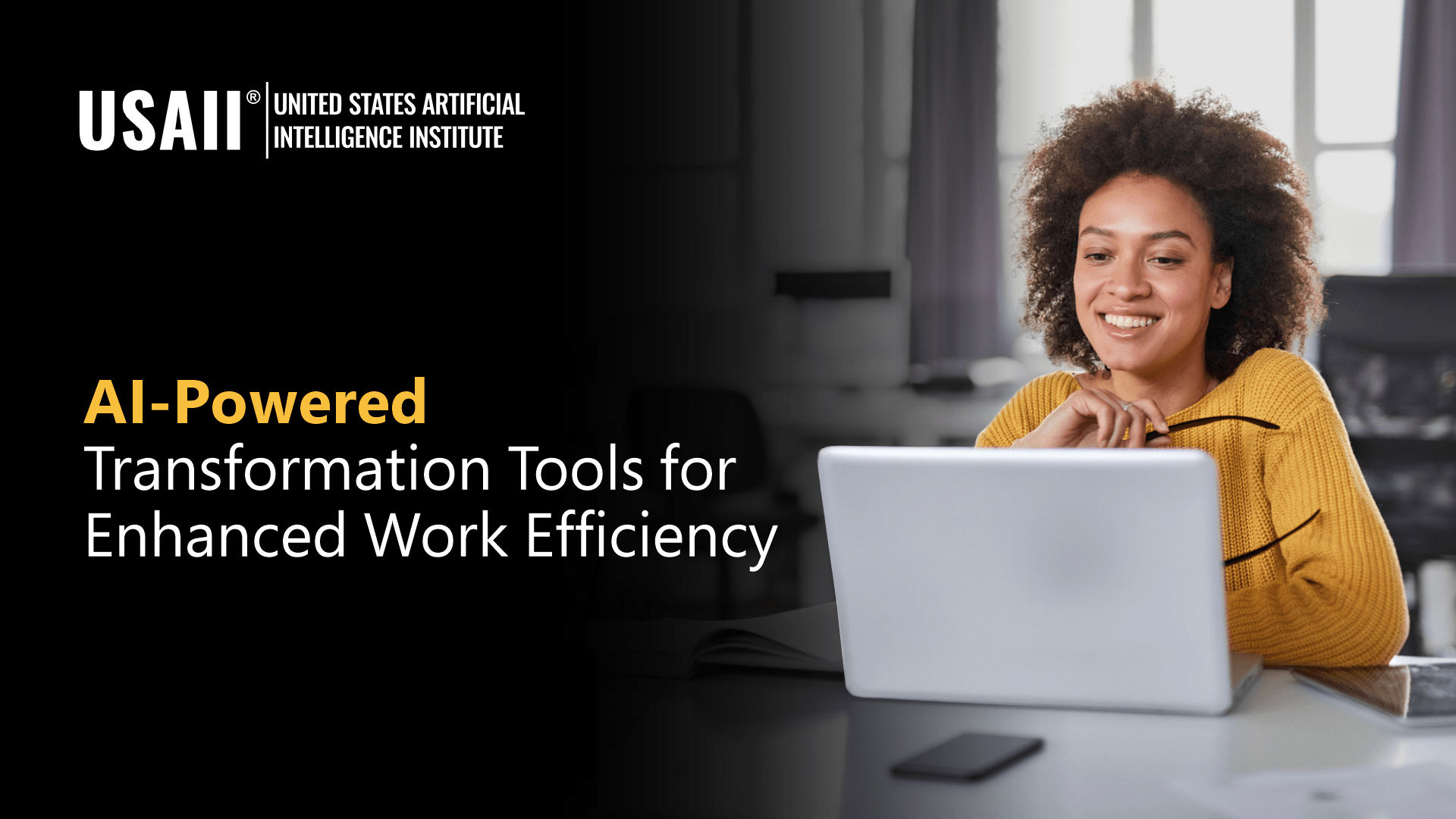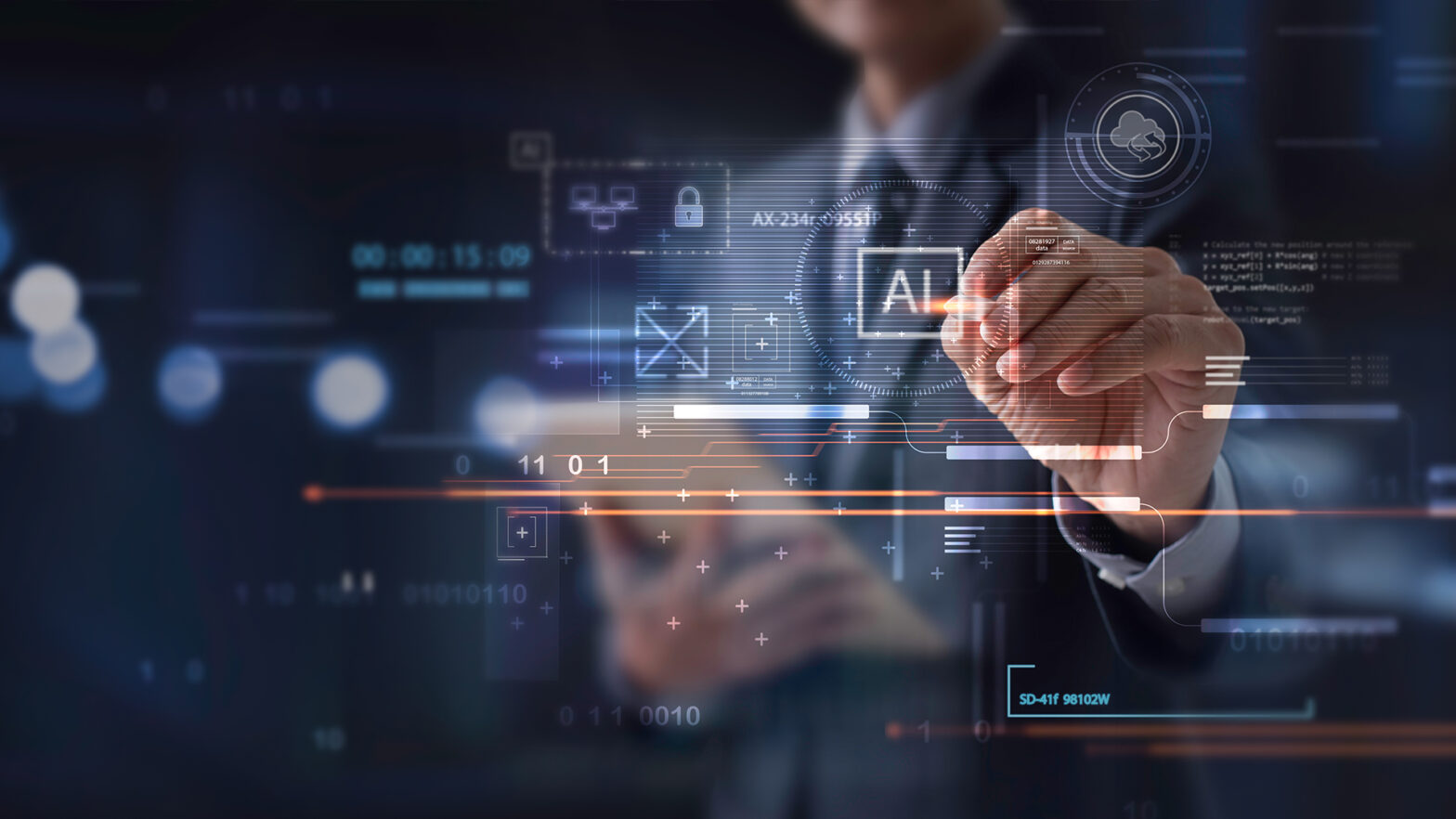Artificial Intelligence (AI) is transforming the workplace. It is enhancing productivity in many ways.
AI tools are helping businesses streamline operations and reduce errors. They automate repetitive tasks, allowing employees to focus on more critical work. This shift not only saves time but also boosts overall efficiency. Workers can now engage in creative and strategic activities, fostering innovation.
Additionally, AI-powered analytics provide insights that guide better decision-making. These technological advancements lead to smarter workflows, benefiting both employers and employees. As AI continues to evolve, its impact on workplace productivity will likely grow, reshaping the future of work. Understanding how AI achieves these improvements can help businesses stay competitive and efficient in a fast-changing world.

Credit: www.usaii.org
Introduction To Ai In The Workplace
Artificial Intelligence, or AI, is changing how we work. It is now a key part of many businesses. AI can handle tasks that once took hours. This means workers can focus on more important jobs. Let’s explore how AI is making workplaces more productive.
The Rise Of Ai
AI has been growing fast. In the past, AI was just an idea. Today, it is real and useful. Many companies now use AI in their daily tasks. They use it to help with data, customer service, and even making decisions. AI tools can learn and improve over time. This makes them very helpful in many areas.
Ai’s Role In Modern Business
AI plays a big role in business today. It helps with many tasks. Here are some key areas where AI is used:
- Data Analysis: AI can sort through large amounts of data quickly. It finds patterns and trends that humans might miss. This helps companies make better decisions.
- Customer Service: AI chatbots can answer customer questions at any time. This improves customer satisfaction and frees up human workers.
- Automation: AI can automate repetitive tasks. This saves time and reduces errors.
AI also helps in other ways:
- It improves communication within teams.
- It makes scheduling and planning easier.
- It enhances security by detecting threats early.
Many businesses now see AI as a must-have tool. It is not just for big companies. Small businesses can use AI too. AI is becoming more affordable and easier to use. This means more businesses can benefit from it.
Automating Routine Tasks
Artificial Intelligence (AI) is transforming workplaces by automating routine tasks. This automation helps employees focus on more critical activities. It also reduces the time spent on repetitive jobs. As a result, productivity in the workplace increases significantly.
Reducing Manual Labor
AI can handle simple and repetitive tasks efficiently. These tasks include data entry, scheduling, and email sorting. By automating these tasks, employees save time and effort. They can dedicate their energy to more complex and creative projects.
Another advantage of AI is its ability to work 24/7. Machines do not need breaks or sleep. This continuous operation ensures that routine tasks are completed faster. Businesses benefit from this increased efficiency and reduced manual labor.
Enhancing Accuracy
Human error is common in manual tasks. Mistakes in data entry or calculations can lead to bigger problems. AI systems are designed to minimize these errors. They ensure high levels of accuracy and consistency.
AI tools can analyze vast amounts of data quickly. They provide precise results without human intervention. This accuracy improves decision-making and reduces the risk of costly mistakes. Employees can trust the data and focus on strategic work.
Streamlining Communication
In today’s fast-paced work environment, clear and quick communication is vital. AI is transforming how we communicate at work. By automating tasks, it saves time and reduces stress. Let’s explore how AI is streamlining communication.
Ai-powered Email Management
Emails are a major part of workplace communication. AI tools can sort, prioritize, and even reply to emails. This reduces the burden of managing a cluttered inbox. AI can identify important emails and highlight them. It can also filter out spam and less important messages. This way, employees focus on what truly matters.
AI can also schedule emails to be sent at optimal times. This ensures that your message reaches the recipient when they are most likely to read it. Automatic follow-up reminders are another feature. They make sure no email goes unanswered.
Virtual Assistants
Virtual assistants like Siri, Alexa, and Google Assistant are becoming common in offices. These AI tools help schedule meetings, set reminders, and manage tasks. They can also provide quick answers to questions, saving time.
Virtual assistants can handle repetitive tasks. This frees up time for employees to focus on more complex work. They can also integrate with other software. This makes it easier to manage different tasks from one place.
AI-powered virtual assistants can also transcribe meetings. This ensures that no important details are missed. They can also translate languages, helping teams communicate better.

Credit: www.helpnetsecurity.com
Data Analysis And Decision Making
Artificial Intelligence (AI) has transformed how businesses operate. One key area is data analysis and decision making. This technology helps companies process data faster and more accurately. AI tools offer insights that were once difficult to obtain. This allows managers to make informed decisions quickly and effectively.
Real-time Data Insights
AI systems can analyze data in real-time. This means businesses can get immediate insights. For example, sales trends or customer behavior patterns. With real-time data, companies can respond to market changes swiftly. This agility helps maintain a competitive edge.
Predictive Analytics
Predictive analytics uses AI to forecast future trends. It examines historical data to predict what might happen next. This is crucial for planning and strategy. For instance, predicting product demand helps in inventory management. It also aids in understanding potential risks and opportunities.
Personalizing Employee Experience
Artificial Intelligence (AI) is transforming the workplace. It helps create a more personalized experience for employees. AI tailors tasks and training to individual needs. This boosts productivity and satisfaction.
Customized Workflows
AI analyzes how employees work. It learns their habits and preferences. Then, it creates customized workflows. This means each employee gets tasks suited to their strengths. They work more efficiently and with less stress.
Customized workflows also help in managing time better. AI schedules tasks based on priority and deadlines. Employees can focus on what matters most. This reduces the chances of missing important tasks.
Ai-driven Training Programs
Training can be time-consuming and generic. AI changes this by offering personalized training programs. It assesses the skills of each employee. Then, it recommends courses and materials suited to their level.
AI-driven training is flexible. Employees can learn at their own pace. They can access training materials anytime. This fits well with their schedules and learning styles.
AI also tracks progress. It provides feedback and suggestions for improvement. This helps employees grow and develop their skills effectively.
Improving Collaboration
Artificial Intelligence (AI) is changing the way teams work together. It helps in streamlining communication and making collaboration seamless. AI tools are now central in enhancing teamwork, ensuring that projects are completed efficiently.
Ai In Project Management
AI software aids project managers in many ways. It can automate task assignments, track progress, and predict project timelines. These tools help in identifying potential risks and provide solutions quickly. This ensures that projects stay on track and meet deadlines.
AI can also analyze team members’ workloads. This makes it easier to balance tasks and avoid burnout. By managing resources efficiently, AI helps teams work smarter, not harder.
Enhanced Team Coordination
AI enhances communication within teams. It can integrate with various collaboration tools like Slack and Microsoft Teams. These integrations help in sharing information quickly and effectively.
AI also offers real-time language translation. This is crucial for global teams working across different time zones. It ensures that everyone understands the tasks and goals clearly. This feature reduces misunderstandings and fosters a cohesive work environment.
Moreover, AI can schedule meetings at convenient times for all team members. It considers different time zones and availability. This makes coordination smoother and reduces the hassle of finding suitable meeting times.
Boosting Creativity And Innovation
Artificial Intelligence (AI) is transforming workplaces by boosting creativity and innovation. AI tools help employees generate fresh ideas and support creative processes. This makes work easier and more exciting. Let’s explore how AI can enhance creativity and innovation at work.
Ai-generated Ideas
AI can assist in creating new ideas. For example, AI algorithms can analyze large amounts of data to find patterns. These patterns can inspire new product designs or marketing strategies. AI-generated ideas are not just random. They are based on solid data.
Using AI tools, teams can brainstorm more effectively. AI can suggest ideas based on current trends. This helps in creating relevant and innovative solutions. Here are some ways AI generates ideas:
- Data Analysis: AI analyzes customer data to find preferences.
- Trend Prediction: AI forecasts future trends.
- Automated Brainstorming: AI tools offer instant suggestions.
Supporting Creative Processes
AI also supports creative processes. It handles repetitive tasks, freeing up time for creative work. For instance, AI can automate report generation. This allows employees to focus on designing new products.
AI tools provide valuable feedback. They can analyze design drafts and suggest improvements. This helps in refining ideas quickly. Here are some examples of how AI supports creative tasks:
| Task | AI Support |
|---|---|
| Designing | AI suggests design improvements. |
| Writing | AI offers grammar and style checks. |
| Marketing | AI analyzes customer feedback. |
In summary, AI is a valuable ally in boosting creativity and innovation. It generates new ideas and supports creative tasks. This leads to a more productive and dynamic workplace.

Credit: www.innovationinbusiness.com
Future Of Ai In The Workplace
The future of AI in the workplace holds immense potential. It promises to reshape how we work. From streamlining tasks to enhancing decision-making, AI is set to be a key player.
Emerging Trends
Let’s explore some emerging trends:
- Automation: AI will handle repetitive tasks. This saves time and reduces errors.
- Personalized Learning: AI-driven platforms can tailor training to individual needs.
- Enhanced Collaboration: AI tools can facilitate better team communication.
- Data Analysis: AI can analyze large datasets quickly. This leads to actionable insights.
Potential Challenges
Despite its advantages, AI in the workplace has challenges:
- Job Displacement: Automation may replace some jobs.
- Data Privacy: Handling sensitive data requires robust security measures.
- Bias: AI systems can inherit biases from training data.
- Cost: Implementing AI can be expensive for small businesses.
Frequently Asked Questions
How Is Ai Used In The Workplace?
AI automates routine tasks, enhancing efficiency. It can analyze data, predict trends, and assist in decision-making. AI tools also improve communication and collaboration.
What Are The Benefits Of Ai In Productivity?
AI streamlines workflows, reduces errors, and saves time. It enhances decision-making through data analysis and boosts overall efficiency, leading to higher productivity.
Can Ai Replace Human Jobs In The Workplace?
AI can automate repetitive tasks, but it won’t replace all human jobs. It enables employees to focus on complex, creative tasks, enhancing job roles.
How Does Ai Improve Decision-making?
AI analyzes vast amounts of data quickly, providing insights and predictions. It helps in making informed decisions, reducing risks, and improving outcomes.
Conclusion
AI boosts workplace productivity in many ways. Tasks get completed faster. Errors reduce significantly. Employees focus on creative work. Collaboration becomes smoother. Decision-making improves with data insights. Adopting AI tools makes work life easier. Companies see better results. Productivity rises without extra effort.
Embrace AI for a more efficient workplace.